Mikael Nyqvist interview – A snapshot of life behind the scenes with Carol Reed's creator

- 1 Comment
In 2004, Swedish filmmaker Mikael Nyqvist and his wife Eleen took a break from making short films together and embarked on creating an adventure game instead. The result was Remedy, the first of what would unexpectedly become one of the longest-running (and most prolific) series of adventure games ever: the Carol Reed mysteries.
With first person Myst-style slideshow gameplay but set in the often cozy and pastoral landscapes of Sweden, the Carol Reed games can be played in any order without getting lost. Built almost entirely from real photographs of Nyqvist's home turf, each game puts the unseen British amateur sleuth on the case to comb through a variety of homes, museums, parks and monuments to chase down leads, crack elaborate puzzles, and solve her latest mystery.
While Eleen stepped away from direct involvement in the series after the third installment, Mikael continued to plug away, donning the many hats of writer, designer, photographer, composer and more — and has managed the incredible feat of releasing a new game every year (with the lone exception of 2010).
November 23rd marks two decades since the launch of Remedy, and in January we'll see the release of Murder Malady, the landmark twentieth title in the franchise. To help mark the occasion, we had the pleasure of chatting with Mikael to talk about his experiences and a little of what we can expect when the new game releases exclusively on the MDNA Games website January 1st.
Hi, Mikael. Glad we’re able to spend some time with you here at the Adventure Game Hotspot to help celebrate the twentieth anniversary of your first game. And what busy years they’ve been, with soon to be a whopping TWENTY Carol Reed mysteries in that time! That’s a phenomenal achievement. When making Remedy, did you even dream it would catch on enough that you’d still be making sequels two decades later?
Mikael Nyqvist: I remember that we made the first game, Remedy, with a possible sequel in mind, just in case people happened to like the game. That I’d be doing the same thing 20 years later didn’t strike my mind of course. But if it had, I certainly wouldn’t think that I’d be 20 games into the series by then. Nancy Drew was the longest running game series in those days (and still is, I guess), and when checking it now, I see that they had just released the tenth game when we released Remedy. The thought of us EVER releasing twice as many games would have been outlandish.
For those who aren’t familiar with the series, can you share a little background about your title character and her adventures?
Mikael: Carol is a young female detective living in the Swedish town Norrköping (which just happens to be my hometown). She’s constantly short on assignments, but somehow manages to get an interesting case each summer. She always gets a lot of help from her constant, but very limited, circle of friends. Her investigations often send her to odd and rather unpleasant locations.
Twenty years of consistent dedication to the Carol Reed series shows a level of commitment that very few developers can match. What is it about these mysteries that keeps you so passionate about making them?

Mikael: The short and rather obvious answer is that I love what I’m doing. I consider myself very lucky to have found something that has kept me going with the same dedication for 20 years. I have also made some very good friends along the way, who have given me an incredible amount of help through the years, especially on the programming side, which no doubt is my weak spot. In fact, I’ve received so much support that I will never be able to pay it back. I also have extremely enthusiastic and supportive players.
I never take pre-orders. But on the first day of release, which is always on the 1st of January, I always sell more than half of the games that I will sell for the rest of the year.
Indeed, it’s become an annual tradition for us as players to ring in the new year with a new Carol Reed game. You wear many hats in making these games. Is there a certain role you enjoy most?
Mikael: I enjoy most aspects of the game-making process, except for writing the scripts. I really hate doing that.
I find coming up with the ideas and putting them all together insanely difficult, and I have to force myself to do it. I suffer from severe writer’s block every single year.
Other than that, I love being out on location and taking the photos, and fixing up the photos (which is what takes the most time). I also enjoy making the music, which always is the very first thing I do for every game. Neither of these things is anything I would do if I didn’t make games.
When doing your location scouting, how do you decide what settings are best suited to a game? Do you have something in mind when you go out, or do you just let Sweden speak to you artistically?

Mikael: I spend a lot of time searching for locations. It’s not easy. I usually go location scouting with a friend on Mondays. I don’t drive myself. Sometimes we have to search for a specific type of location that will suit a scene in the game. But mostly we’re looking unreservedly after interesting places. If I can build a scene around them, I will fit them into the script one way or another.
For example, we’re always on the lookout for abandoned houses. They are so frequent in my games that many players think that they are very common in Sweden. In fact, it’s the other way around. They’re very rare here, which may be one reason that I find them so fascinating. They’re also very convenient in several ways: You can easily fit them into storylines, you will usually be left alone in them, and you can rearrange stuff to your liking.
Got any fun stories from your personal adventures doing the photography portion of the process?
Mikael: I don’t remember any particularly funny incidents. But since I do what practically no one else is doing (running around taking pictures in all directions, and placing and moving objects), it tends to pique people’s interest, and sometimes annoy them. A couple of years ago, I was shooting the ending scene for the game Geospots, in which a dead person is lying beneath a small cliff. I photographed the person on the ground first, and let him go home after that. Then I shot all the surroundings, both below the cliff and on top of it. When I was about to wrap up, a man came running towards me, claiming that I had been photographing his wife, who apparently had been sunbathing in their garden not far from the location. I guess that would have been possible with a telephoto lens from the top of the cliff.
He went on about wanting to see my pictures, and threatening to call the police. He said that if I didn’t want to show him my pictures, and refused to wait for the police to come, he would follow me. So I sat down on the cliff and placed the camera on the ground, a few meters in front of us, right between us, so that he would see that I didn’t fiddle with anything.
While sitting there, I went through an inner monologue about whether I should explain to him that I hadn’t photographed his wife, and even if I had, there’s no law against that, or if I should simply show him the pictures, which would most certainly shut him up quite effectively. I settled on the second option.
If nothing else, it gave me an entertaining recording to play for my Swedish-speaking friends. I recorded it all on my phone, of course. You have to do that when things get heated.
For the first few games, you gave your photos a watercolor treatment that you later set aside for a more realistic look. What prompted that decision?
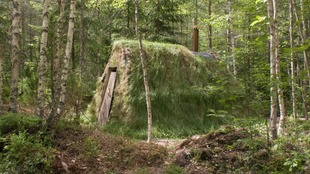
Mikael: To initially use the filter was a very pragmatic design choice. Digital cameras back then were not so good, and it wasn’t always possible to get the image in focus, at least not in naturally lit environments. We used the watercolor filter to conceal that. The cameras were rapidly getting better, but we kept the filter anyway, since it gave the games a distinctive look. But, since I could compare the original images to the filtered ones, I ultimately felt that it did more damage than good, and decided to get rid of it completely. Opinions still vary between players whether it was the right choice. I don’t regret it though.
Other than that, has your design philosophy undergone any significant shifts over the years?
Mikael: Not really. I don’t exactly feel any pressure to change anything either, since a quite common request I get from players is, "Don’t change anything!" I guess you can say that my players are highly conservative in that sense.
The interface has gone through some minor changes over the years, but other than that, the general design concept has remained the same.
I recently replayed all the games, for the first time ever, since we’ve migrated them to a new gaming engine and they had to be tested. My instant impression was that I thought that the earlier games were much harder. I even had to look up walkthroughs in some instances.
At least one of your games was loosely based on a real-world mystery. Are most of them straight out of your own imagination, or are they inspired in some way by actual events?
Mikael: Most stories are completely fictional, while some are built on real-life characters and events. Sometimes it’s explicit, but it happens that I change names of actual persons for various reasons.
Similarly, is Carol Reed based at all on anyone you know, or is she purely a fictional character?
Mikael: We didn’t draw any inspiration from any actual person for Carol, so she’s 100% fictional.
Why make Carol British rather than simply another native Swede?

Mikael: This was also a very pragmatic decision. We knew that we had to use friends and family as voice actors. Some of them weren’t exactly fluent in English. We thought that if we’d make the main character an Englishwoman living in Sweden, then we had to force the characters to speak to her in English. This gave them an excuse for the Swedish accent.
Any chance you might one day take a stab at making a game that doesn’t feature Carol Reed?
Mikael: No. I do almost everything in the games: The photography, the scripts, and the music, and friends and acquaintances appear as characters in the games. If I would try to make another type of game, it would most likely be too similar to the Carol Reed games.
I have done some other work though. Back in the early days, me and my wife wrote a script for a totally different sort of game, on commission. I also helped friends on various projects.
With very few exceptions, your games aren’t available on the typical storefronts like Steam or GOG. What led to the decision to only sell the series directly from your website?
Mikael: I have none of my games on Steam. Some shady publisher who’s never paid me a dollar has put up two of my games there, however. I’ve contacted Steam several times about this, but never received a reply. I can’t say that I’m too keen about ever publishing anything there.
My games have been on various platforms through the years, but that has always been handled by publishers. I don’t have the energy, and am too disillusioned, to handle stuff like that anymore.
I have some of my games on WildTangent Games, though.
Do you like handling orders yourself, in that it gives you a bit more personal connection with players that you might not experience otherwise?
Mikael: Yes I Do! And I do indeed believe that it leads to a more personal relationship with the players. I get tons of emails from players about all sorts of things, which I appreciate greatly. I very much doubt that I would have the same contact with players if I only had sold my games through Steam.
Selling games during the CD/DVD era was quite exhausting, though.

Just like clockwork, you’ve recently announced your latest Carol Reed game, marking her twentieth mystery! What can you tell us about that?
Mikael: It’s called Murder Malady, and it will be released on January 1st, as always. It’s the largest game thus far, going by the number of images. It features some interesting locations, of which some are filthy and rather depressing. When Jonas (a regular character in the games) meets Carol after she has visited one of these locations, he says “you smell very badly.” That line was stolen from my wife, who said the exact same thing after picking me up in the car when I had taken some shots in that location.
I shot the game in record time, due to extraordinarily appropriate weather conditions. I only shoot on sunny days, and sometimes these are few and far between in Sweden. But once I started shooting, in the middle of May, I didn’t see a cloud for 17 days.
After a career that already blows most others away, is there any sign of retirement looming on the horizon for Mikael Nyqvist and Carol Reed?
Mikael: That’s not gonna happen anytime soon. Assuming that people want to continue playing my games, and I will remain in good health.
Well, we’re certainly glad to hear that Carol, and you, are showing no signs of slowing down, as the series has lots of fans that look forward to each new annual installment. So don’t let us hold you up any longer; you’ve got another game to finish! Thanks for taking time to speak with us. Happy twentieth anniversary, and all the best with Murder Malady and in making many more great new adventures in the future.
Mikael: The pleasure was mine!




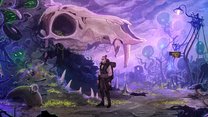
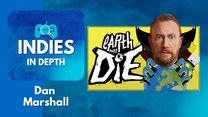
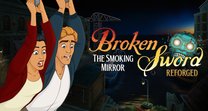
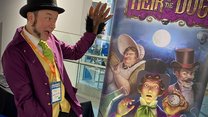


1 Comment
Want to join the discussion? Leave a comment as guest, sign in or register in our forums.
I was very happy to stumble upon Mikael's interview, as I was searching for CD's of Carol's games and this article explained the search is over as, Mikael does not use them. But I would like to say that when I had issues with some of the games, Mikael helped me with them. I appreciate that he does not mind his fans contacting him for help and praise. Karen Knapp
Reply
Leave a comment